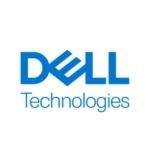What is our primary use case?
I'm running an application that's running under a virtual machine on vSAN. That vSAN environment is only for this specific application. We didn't only choose vSAN; we chose VMware because of SR-IOV, which is more on the hypervisor level and not on the vSAN storage. It's part of the whole system.
The solution is deployed on-prem.
There are seven users in my organization. They are all in IT roles.
What needs improvement?
There could be more features with the automatic backup.
For how long have I used the solution?
I've been using this solution for a year and a half. I'm still using the solution with a bigger environment, not vSAN.
What do I think about the stability of the solution?
Buyer's Guide
VMware vSAN
December 2025
Learn what your peers think about VMware vSAN. Get advice and tips from experienced pros sharing their opinions. Updated: December 2025.
879,422 professionals have used our research since 2012.
What do I think about the scalability of the solution?
The solution is scalable.
How are customer service and support?
Technical support is bad. They pointed me to professional services, and I had to pay someone when I already had the basic support agreement. I think we took the standard support agreement with VMware.
Which solution did I use previously and why did I switch?
I'm still using a different solution. I only took two servers with vSAN to support one application that needs one feature that only VMware has. If not for that feature, I wouldn't touch VMware.
Now, I'm looking at products like Nutanix, Silver Peak, Flexione, and FortiGate. For products that I choose, I don't need a specialist of that vendor. In VMware, I need a specialist in VMware.
That's the issue I have with VMware. It's not like I can take any IT person, and they will know what to do. I need to make sure he will do the call, get the certificate and time to practice.
How was the initial setup?
Initial setup was complex. I would rate the complexity a 5 on a scale of 1 to 5.
For an experienced IT person, it isn't that complex. But if I compare it to the competition, Nutanix would be a 1, and VMware would be a 5. If you have never touched Nutanix, VMware is not that complex. But if I compare it to Nutanix, it's complex.
Deployment of VMware vSAN took four days.
What about the implementation team?
We used a third party for deployment. We didn't have a good experience with them.
The person didn't have knowledge in VMware, and we had to pay someone to do the installation, and they said things like, "We need this. We need a certificate. We need another VLAN. We need another number."
What's my experience with pricing, setup cost, and licensing?
The cost is expensive. I purchased two servers. The hardware cost was $19,000. The software cost for these two servers, including the vSAN, was $30,000, which is $11,000 more than the hardware. Then I had to pay another $5,000 for installation and implementation for professional services. In total, it was $54,000 for two vSAN Servers.
What other advice do I have?
I would rate this solution 4 out of 10.
For my needs on virtual machine and HCI, which is hyperconverged infrastructure, I have another solution that costs less and gives me better features. When it comes to one feature that only VMware supports, I had to pay. They have the patents, and they have things that only they can do. But I work in the telecom world, and we give services to a lot of companies. On my infrastructure, there are more than 80 million people using the infrastructure on a daily basis. Most of it is not VMware, and I'm so happy.
For the last two years, Gartner and even Nutanix have been above VMware.
My advice is to be sure you really need it, as there are other vendors in the market that give good solutions. Nutanix and Hyper-V give a solution that is good for most cases in the market. If I take the business world, 80% of the businesses in the world will be okay with other vendors and they cost less.
My environment is 26 physical servers that aren't VMware and two physical servers that are VMware.
Previously, we had 400 servers, and only five of them were VMware. When you look in the market, you know the better solution for your needs. No one in the world has been fired or lost their job for purchasing Cisco; it's the name. It's the same with VMware; it's just too expensive.
Which deployment model are you using for this solution?
On-premises
Disclosure: My company does not have a business relationship with this vendor other than being a customer.



















